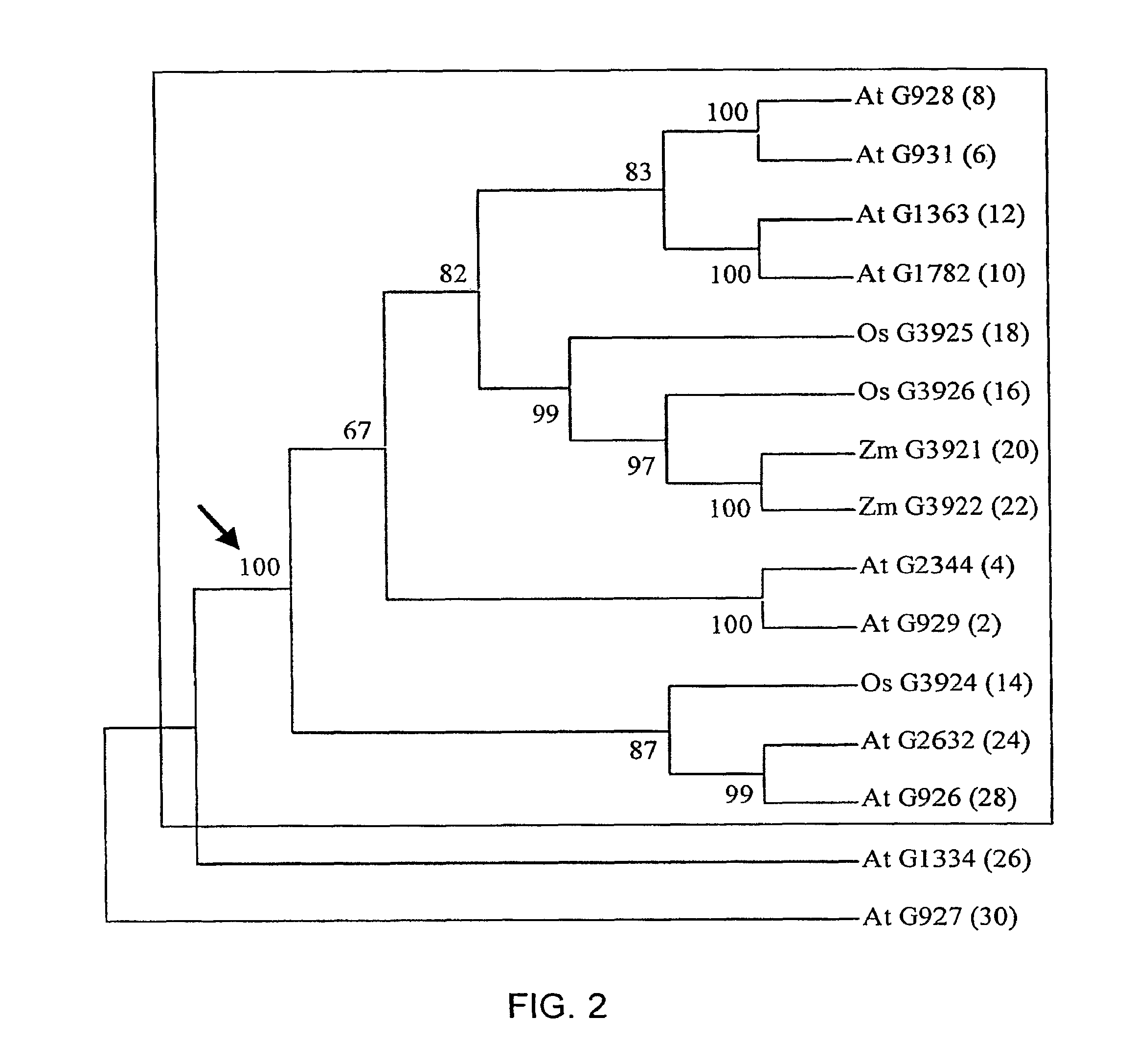Plants with enhanced size and growth rate
a technology of plant genome and growth rate, applied in the field of plant genomics and plant improvement, can solve the problems of not being able to make specific predictions, not being able to provide one with a means to determine, and not being able to confirm, so as to increase the yield of commercially significant plants, increase the growth rate, yield and/or mass of plants, and increase the yield
- Summary
- Abstract
- Description
- Claims
- Application Information
AI Technical Summary
Benefits of technology
Problems solved by technology
Method used
Image
Examples
examples
[0159]It is to be understood that this invention is not limited to the particular devices, machines, materials and methods described. Although particular embodiments are described, equivalent embodiments may be used to practice the invention.
[0160]The invention, now being generally described, will be more readily understood by reference to the following examples, which are included merely for purposes of illustration of certain aspects and embodiments of the present invention and are not intended to limit the invention. It will be recognized by one of skill in the art that a polypeptide that is associated with a particular first trait may also be associated with at least one other, unrelated and inherent second trait that was not predicted by the first trait.
example i
Project Types and Vector and Cloning Information
[0161]A number of constructs were used to modulate the activity of sequences of the invention. An individual project was defined as the analysis of transgenic plant lines for a particular construct (for example, this might include G929, G3926, G3911 or G3543 lines that constitutively overexpressed a sequence of the invention). In the present study, each gene was directly fused to a promoter that drove its expression in transgenic plants. Such a promoter could be the native promoter of that gene, or the cauliflower mosaic 35S promoter. Alternatively, a promoter that drives tissue specific or conditional expression could be used in similar studies.
[0162]In the present study, expression of a given polynucleotide from a particular promoter was achieved by either a direct-promoter fusion construct in which that sequence was cloned directly behind the promoter of interest, or a two-component system, described below. A direct fusion approach ...
example ii
Transformation of Agrobacterium with the Expression Vector
[0167]After the plasmid vector containing the gene was constructed, the vector was used to transform Agrobacterium tumefaciens cells expressing the gene products. The stock of Agrobacterium tumefaciens cells for transformation was made as described by Nagel et al. (1990) FEMS MicroBiol. Letts. 67: 325-328. Agrobacterium strain ABI was grown in 250 ml LB medium (Sigma) overnight at 28° C. with shaking until an absorbance (A600) of 0.5-1.0 was reached. Cells were harvested by centrifugation at 4,000×g for 15 min at 4° C. Cells were then resuspended in 250 μl chilled buffer (1 mM HEPES, pH adjusted to 7.0 with KOH). Cells were centrifuged again as described above and resuspended in 125 μl chilled buffer. Cells were then centrifuged and resuspended two more times in the same HEPES buffer as described above at a volume of 100 μl and 750 μl, respectively. Resuspended cells were then distributed into 40 μl aliquots, quickly frozen i...
PUM
| Property | Measurement | Unit |
|---|---|---|
| melting temperature | aaaaa | aaaaa |
| thermal melting point | aaaaa | aaaaa |
| temperature | aaaaa | aaaaa |
Abstract
Description
Claims
Application Information
 Login to View More
Login to View More - R&D Engineer
- R&D Manager
- IP Professional
- Industry Leading Data Capabilities
- Powerful AI technology
- Patent DNA Extraction
Browse by: Latest US Patents, China's latest patents, Technical Efficacy Thesaurus, Application Domain, Technology Topic, Popular Technical Reports.
© 2024 PatSnap. All rights reserved.Legal|Privacy policy|Modern Slavery Act Transparency Statement|Sitemap|About US| Contact US: help@patsnap.com










